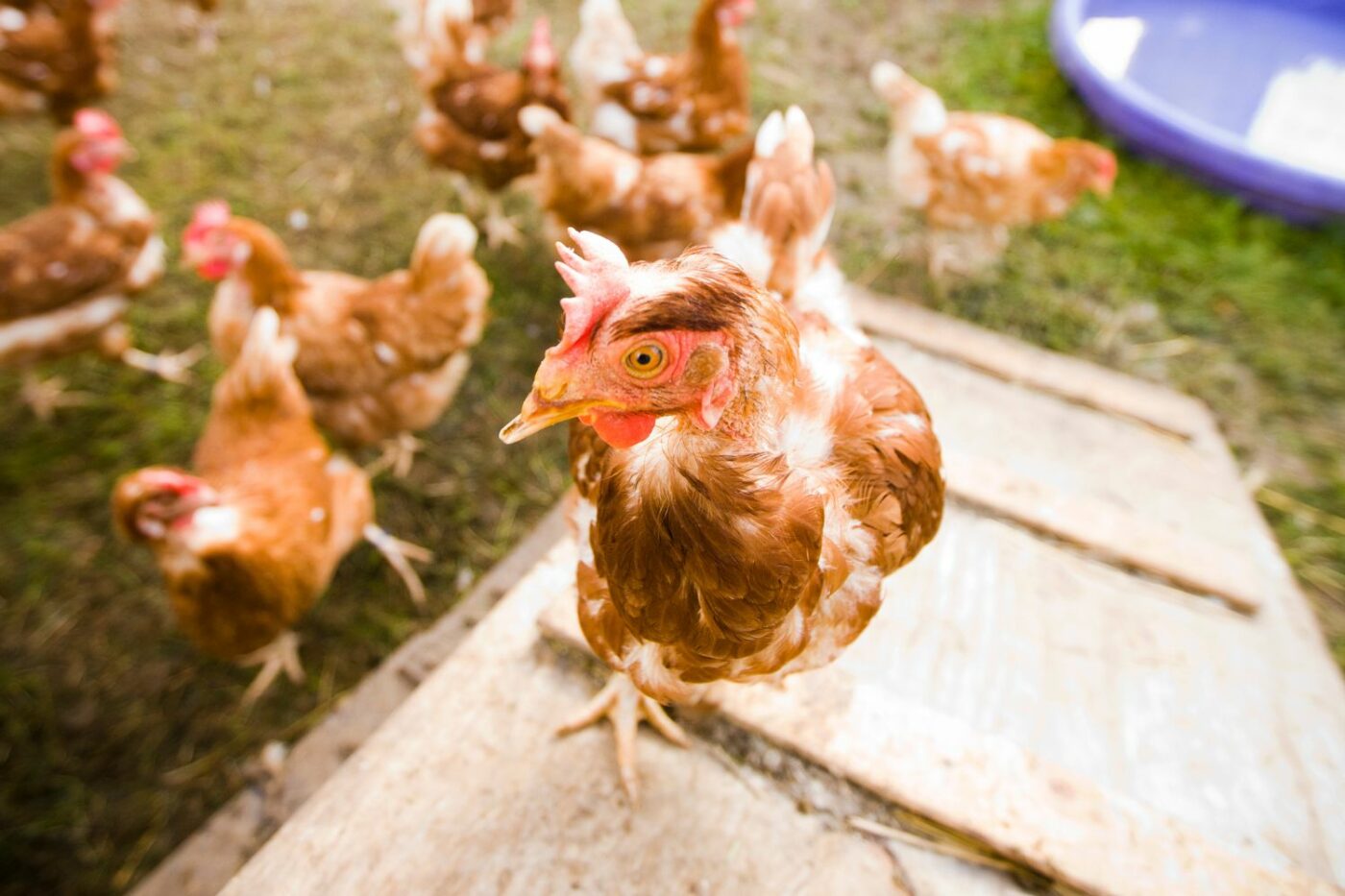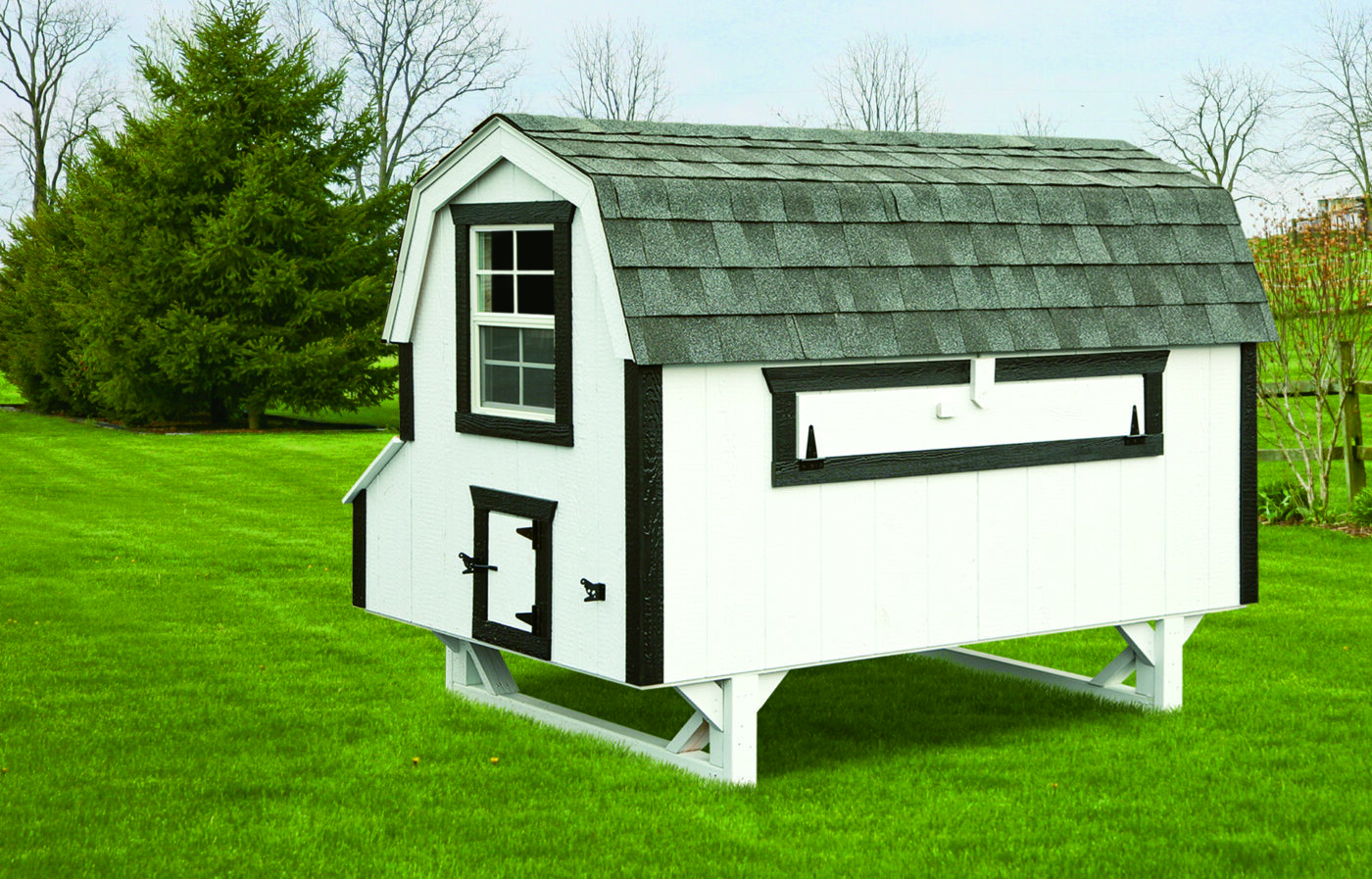
Are you about to start a new adventure of raising your own chickens and fresh eggs? Are you building your chicken coop or buying one that’s pre-built? In researching both options, you’ve probably looked at so many different styles and sizes of coops that they all run together. You may have noticed that the one consistent factor in chicken coops is the chicken coop ramp.
This small component of a chicken coop is easy to overlook, but it serves an important purpose. Your chicken coop ramp gives your feathered fowl easy access to the interior of their home in case of rain or other bad weather. It also helps you use your chicken coop space more efficiently and protects your chickens from predators.
Some may wonder if the actual construction and design of the chicken coop ramp are important. Can’t you just lay a wide board in the door of your coop and let your chickens go up and down on that? While that method might work in some situations, it’s not the safest and best option for your chickens. Chicken coop ramps are designed with different things in mind to keep your chickens safe and happy.
What is a Chicken Coop Ramp?

A chicken coop ramp is used by the chickens to get into and out of their coop safely and easily. It can also be used for chicken to reach their roosting spots. Chicken coop ramps are a common sight on chicken coops.
Chicken coops are generally kept a foot or two off the ground by stilts. This offers protection from predators. If a coop is off the ground, it’s harder for snakes, foxes, and other predators to get into the coop. If your chicken’s coop were directly on the ground, they wouldn’t need a ramp to access their home, but this would give predators the same easy access to the interior of the coop.
For the safety and comfort of all involved (except, of course, the predators), it’s best to have a chicken coop that is at least a foot off the ground. This means that you will need a chicken coop ramp to be installed on your coop.
Most coops come with a ramp attached to the coop, but some don’t. If you’re looking for a new coop or looking to build your coop, there are some things that you should consider before you make any final decisions.
Chicken Coop Ramp Designs

Chicken coop ramps are generally all designed the same. The ramp consists of one large board with smaller rungs attached at intervals, the whole length of the board. The rungs on your chicken coop ramp help the chicken to grip the ramp and to walk safely into the coop.
A good width for a chicken coop ramp is 8 inches at the narrowest. If it’s too narrow a space, your chickens might not feel secure enough to use the ramp. The length of your ramp depends on how far off the ground your coop is.
Materials for Chicken Coop Ramps

What should your chicken coop ramp be made out of? The majority of ramps are made of wooden boards or plywood. Wooden boards are the more durable and long-lasting option between these two options.
The rough texture of plywood creates an excellent grip for your chicken’s ramp. Plywood will tend to sag with passing time, so if you choose plywood, you should make sure to reinforce it with sturdier backing.
Whatever material you choose to make your chicken coop ramp with, you should make sure that it has a texture that won’t cause your chickens to slip and slide. The rungs that you attach will help greatly with this as well.
How Steep Should a Chicken Coop Ramp Be?
One major question when it comes to building a chicken coop is how steep a chicken coop ramp should be. Does the pitch of the ramp affect the chickens and their ability to climb the ramp? Should you make your ramp extra long so that you can put it on a gentle slope?
The angle of your chicken coop ramp depends on how well your chickens can grip the ramp. If you have a ramp that doesn’t have any rungs, it should be at a gentle angle. By gentle angle, I mean an angle that is below 30 degrees.
If your chicken coop ramp has rungs, it can be at a steeper angle. A ramp with rungs can be placed at an angle of 30-50 degrees. With this angle, you should place gripping rungs every few inches.
How to Maintain a Chicken Coop Ramp

The ramp of your chickens’ coop is going to be a frequently used part of the coop. This means that it is going to get a lot of wear and tear. You should carefully monitor the condition of the chicken coop ramp and make sure that it stays in good condition.
If the ramp gets damaged or worn down and slippery, it can cause your chickens to slip and injure themselves. You should make sure that your ramp is sturdy and safely attached to your coop to ensure your chickens won’t hurt themselves.
Your chicken coop ramp will also need routine cleaning. Chickens can be messy animals! Keep the ramp clean, and it will last longer. You should also make sure that you keep it sealed and painted as needed. This not only helps with the looks of your chicken coop, but it also keeps your coop in good condition longer.
Do I Need a Chicken Coop Ramp?

Chickens can jump and fly a little bit. This means that in some situations, a chicken coop ramp won’t be necessary. If your coop is close to the ground, your chickens should be able to simply jump up into the doorway.
If your chicken coop door is higher than 18 inches, you should have a chicken coop ramp for your larger chicken breeds to use. For smaller chicken breeds it’s recommended that a coop that’s 12 or more inches off the ground have ramps. In the long run, it’s better to have a chicken coop ramp that your chickens only use sometimes rather than not being able to get into their coop.
How to Build a Chicken Coop Ramp

Do you have a coop that just needs a ramp to complete it? Well, you saved the best part of your coop for last! Constructing your chicken coop ramp is an excellent way to ensure that it’s done right. Check out our step-by-step process for building your chicken ramp.
Design Your Chicken Coop Ramp

The first step to building your chicken coop ramp is coming up with a good design for your ramp. To start this, you should measure the distance from your chicken coop door to the ground. Next, calculate the angle at which your ramp should be set. Measure along that angle to find how long you will have to make your ramp.
Next, you should decide how wide you want your chicken coop ramp to be. Remember that it should be at least 8 inches wide. Once you have the length and width of the ramp figured out, plan for the rungs of the ramp. You should put them every 2-4 inches apart to give your chickens a good place to grip. These rungs should be around 1 inch wide and high for a chicken coop ramp that’s at an angle between 30-50 degrees.
If you decide to use a solid board for your chicken ramp, you shouldn’t need to add reinforcement braces to the back of your ramp. You should add braces to the back of the ramp if you choose plywood as your base.
Decide how you want to finish your chicken coop ramp. Do you want to stain the wood for a natural look or do you want to paint it to match the rest of the coop? Make sure you add a good sealer to your list of needed materials. This will help your ramp to last longer and save you from having to replace it in the future.
Now that you have all your measurements down and a list of needed materials together, it’s time to go shopping!
Gather Your Materials
Stop by your local home improvement store to find the materials you need for this project. Ask a knowledgeable employee for recommendations of the best quality materials. When it comes to buying materials for your chicken ramp, don’t settle for inferior materials. Choose top-quality materials, even if it may cost you a little extra.
Assemble Your Chicken Coop Ramp

Gather all your materials and tools and get ready to build! If any of the wood needs to be cut, make sure you double and triple-check your measurements before you cut.
Attach the rungs to the baseboard of the ramp with quality screws or nails. If you need braces or sides for the chicken ramp, attach those. You can finish the ramp with textured paint or rubber mats to create a surface that is even more slip-proof.
Installing Your Chicken Coop Ramp
Once the chicken coop ramp is fully assembled, it’s time for it to find its final resting place. Put your handiwork in position at the entrance to your chicken coop and use a level to make sure it’s at the desired slope. Attach the top of the ramp to the coop and make sure it’s stable and won’t shift when your chickens use it.
After you’ve installed the chicken ramp, watch your chickens as they use it and adjust it as needed. You should also routinely check for any signs of wear and keep the ramp in great condition for your chickens!
DIY vs. Pre-Built Chicken Coop Ramps
Are you wondering if you should choose a pre-built chicken coop ramp or if you should build your own? You can find chicken ramps for sale online and in stores. You can also find designs and tutorials for DIY chicken ramps. Which of the many options should you go with?
If you’re not comfortable with DIY projects, then you should choose a chicken coop that’s ready to go. If you want a chicken ramp that’s uniquely your own, build your own! This will let you make it exactly the size you want it and with the finish you want.
Ready for a New Chicken Coop?

With all this talk of chickens and their homes, are you ready to get started on raising your chickens? A great way to get started is with a prefab wooden chicken coop. The Hen House Collection has a wide selection of coops that are a cut above the rest. We offer different styles, colors, and sizes. One thing that doesn’t change with our coops is the standard feature of a chicken coop ramp.
We believe that a ramp is an important part of keeping your hens safe and healthy. That’s why we make a chicken ramp a standard feature on all our coops. Besides a ramp, our coops are outfitted with deluxe accessories and custom options that make them the perfect home for your chickens.
We’d love to help you find your chickens’ dream home! Get started today by getting in contact with us. You can also find a dealer that’s close to you to help you pick out your coop!




